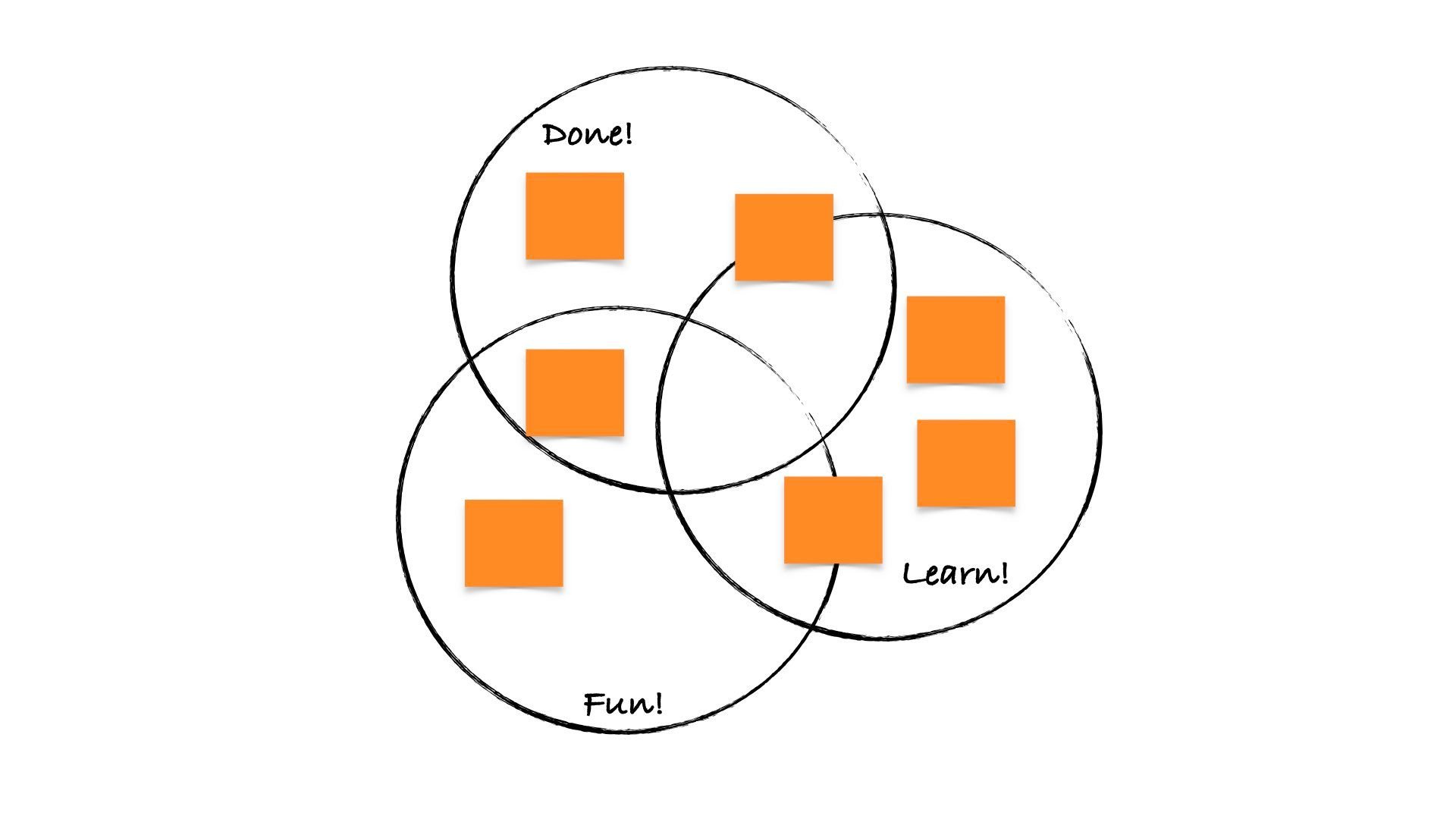Beats in the Dojo Loop: Reflect (4 of 4)
This is the final part of a series on how iterations work in a dojo challenge. See Part 1: Plan, Part 2: Do, Part 3: Share for the whole story.
We've planned, we've collaborated in doing, and we've shared our learnings. Now it's time to take stock of the last 2.5 days, our experience as a whole, and direct insight, feedback, and action toward the next iteration.
Reflections are an opinionated take on the agile retrospective. Word choice is intentional here. Reflections bounce and are changed by the service they bounce off of. We gather facts, data, feelings, and impressions to feed forward into planning. It's a loop. Our past experience helps us pivot and refocus our future focus.
Coaches often use their favorite retrospective formats in a dojo reflection. A good starting point is the classic "Good, Meh, Bad." I like to mix up the format and purpose depending on where the team is in their challenge and what they're trying to learn.
Team Health Checks
Consider running a team health check. You can use the Spotify squad health check tool, where you gather data for a short period across a number of team health dimensions (fun, easy to release, health of codebase, delivery of value, speed, learning, etc.), or you can run it as a one-off, asking about the hyper-sprint you just completed. Interpret this data, look for trends, invite conversation, and make some changes to address the hotspots. I think one or two of these in a 6-week challenge is plenty.
Backing Off
New coaches tend to take the weight of the world on their shoulders by doing everything for the team. Facilitation Bot 3000. One small gesture is to invite a member of the team to facilitate retrospectives. Say your team has a scrum master on it, they'll likely welcome the chance to run their favorite retro format or collaborate with you on a new one!
The Product Feedback Retro
One one challenge team I was coaching we found our share events were becoming very popular. At first there were a dozen people. That doubled and then tripled. Then an oddball VP started showing up. This made sense; it was a platform team with high visibility working toward a big impact. These retros were chock full of feedback, feedback we wanted to capture and incorporate into our plan.
This retro requires a bit of planning. You have to ensure you're capturing the notes people give you because you'll need that data to process after the share, in reflection. I recommend you have a few scribes and you coach the team to not negotiate in the reflection, instead thank participants for their feedback, note it, and move on.
Processing product feedback from a share in the reflection stage of a hyper-sprint.
When you get back to your team challenge area, it's time to process the feedback. I use a grid similar to the above image. What conflicted or confirmed our plans? What confirmed a hunch or something that was speculative? Was there any feedback we found confusing, maybe something to follow up on?
Review the Skills Inventory
Toward the end of the challenge, I like to review the skills inventory we created in the team's charter. I ask people to circle or highlight the skills where they feel they've leveled up in some way.
The Charter Check-in
At the mid-point of the team’s challenge, it’s good practice to check in on the teams charter, specifically their goals and success measures. This helps align the team to their original mission or tighten focus on what they’ve discovered to actually matter as they’ve progressed on their learning journey.
Go through each goal and ask the team:
Is this objective still important to us? Have we discovered something that could help us refine this objective? Is there something more important to learn or do?
Which Key Results have we attained? Which seem unobtainable within our 4-week challenge? Is there something better we could use as a Key Result?
Be sure to update the team’s frame based on this discussion. Sometimes this discussion will yield worthwhile work for planning in the next or subsequent sprints, so be sure to capture those items.
Continous Retrospective
Reflection needn't be a scheduled activity. Any time any subset of the team wants to reflect and pivot, they should. Continuous micro-retrospectives should be encouraged. Getting metacognitive about what we're doing when we're doing it is a powerful, social learning technique.
Fun-Done-Learn - micro-retrospective after a mobbing session.
One example of this comes after a session (several rotations) of mob programming. I learned a nice format called "Fun Done Learn" from the Mob Mentality dudes, Austin Chadwick and Chris Lucian. They take a brief pause after a mobbing session to where the team takes stock on what was fun, what did we learn, and what did we get done? “That mini-experiment we did was fun, let's do more of that!” It may surprise you what your teammates learned or we discovered as a group. And completion keeps us focused on the mission at hand. It also feels nice to acknowledge our progress.
Retrospect anytime you need to. Go ahead and pull that andon cord when a retrospective seems necessary.


